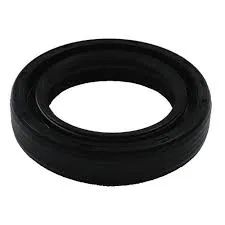7 月 . 28, 2024 11:08 Back to list
Essential Guide to High-Quality Auto Parts and Choosing the Right Oil Seals for Your Vehicle
Understanding Oil Seals in Auto Parts Importance and Function
When it comes to the intricate world of auto parts, one small yet critical component often goes unnoticed the oil seal. Oil seals, also known as fluid seals or grease seals, play a significant role in ensuring the proper functioning of a vehicle’s engine and mechanical systems. This article delves into the importance of oil seals in automotive applications, their functions, types, and maintenance tips to extend their lifespan.
What is an Oil Seal?
An oil seal is a mechanical component designed to seal the intersection between generally stationary and moving parts in automobiles. Typically made of rubber, polyurethane, or other synthetic materials, oil seals work to prevent the leakage of lubricants, such as engine oil or transmission fluid, from the system. This is particularly crucial in engines where maintaining consistent lubrication is essential for optimal performance and longevity.
Functions of Oil Seals
1. Preventing Lubricant Leakage The primary function of oil seals is to prevent the escape of lubricants from the moving parts of the engine and to keep contaminants such as dirt and moisture out. This is crucial for ensuring that the engine operates smoothly and efficiently.
2. Maintaining Pressure Oil seals help maintain the internal pressure within the engine, which is necessary for the effective operation of various components. Proper pressure levels are vital for the engine's overall health and performance.
3. Reducing Friction By keeping lubricants in place, oil seals help reduce friction between moving parts. This not only enhances the efficiency of the engine but also minimizes wear and tear on critical components.
4. Protecting Against Contaminants Oil seals create a barrier that protects the lubrication systems from external contaminants. This lessens the risk of damage to sensitive engine parts, ensuring longevity and reliability.
Types of Oil Seals
There are several types of oil seals used in automotive applications, each designed for specific functions and contexts
auto parts oil seal

1. Single-Lip Seals These are the most common type of oil seals, featuring a single sealing lip that presses against the shaft. They are used in various applications, including crankshafts and camshafts.
2. Double-Lip Seals These seals have two lips and provide a higher level of protection against contamination. They are often used in environments where dust and moisture are prevalent.
3. Spring-Loaded Seals Some oil seals include an internal spring that applies constant pressure to the sealing lip, enhancing the seal's ability to prevent leaks. These are particularly useful in applications subject to vibration or thermal fluctuations.
Maintenance and Replacement Tips
While oil seals are designed to be durable, they can wear out over time due to factors such as heat, chemicals, and contaminants. Here are some maintenance and replacement tips
1. Regular Inspections Periodically check oil seals for signs of wear or leaks. Signs of oil leaks around the seal area can indicate that it may need replacement.
2. Proper Installation Ensure oil seals are installed correctly during repairs or maintenance. Improper installation can lead to early failure.
3. Use Quality Parts When replacing oil seals, opt for high-quality parts that meet or exceed OEM standards. Quality seals ensure better performance and longer lifespan.
4. Monitor Fluid Levels Keep an eye on engine oil and fluid levels, as low levels can lead to increased pressure and stress on the seals, resulting in premature wear.
Conclusion
In conclusion, oil seals are vital components within the automotive industry, performing essential functions that contribute to the overall health and performance of engines. Understanding their importance, types, and maintenance practices can enhance vehicle longevity and efficiency. Regular care and attention to these small yet significant parts can contribute greatly to a vehicle's reliability and performance on the road.